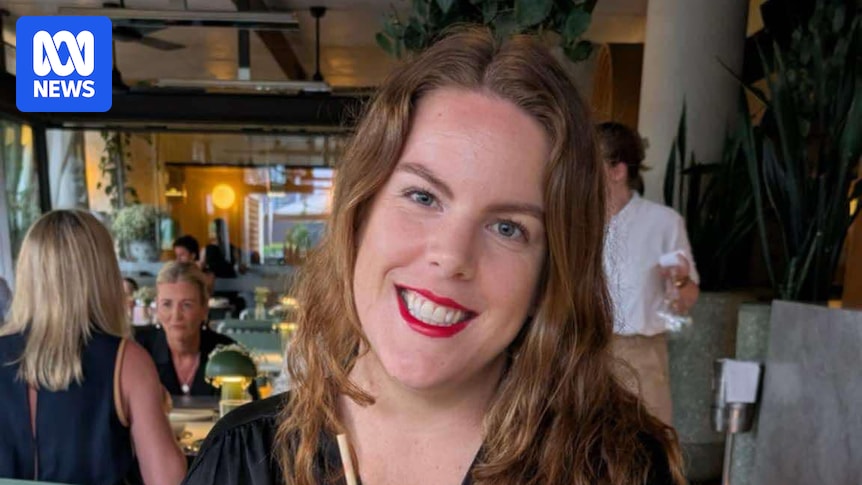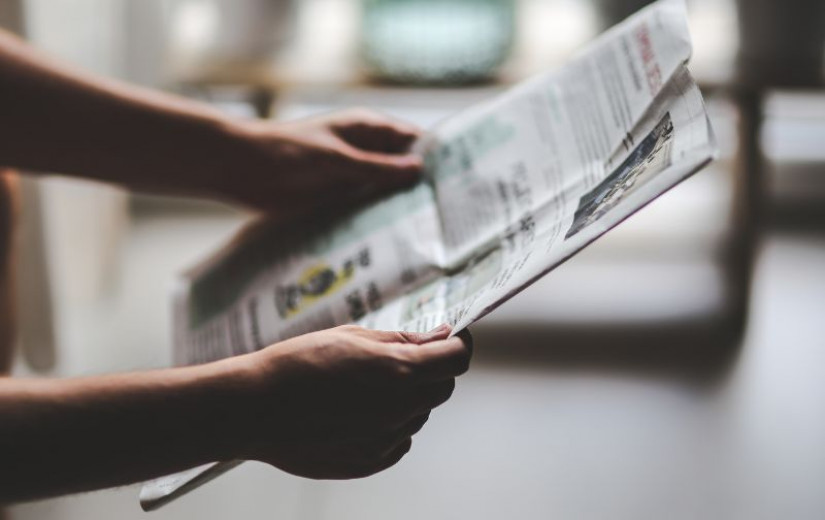
When the rent lands for Emma Young's Brisbane home each month, there's nobody to split it with.
The same goes for utilities.
And when the 34-year-old travels, it costs her the same price as a couple.
These are examples of the so-called singles tax, and data shows it could be costing solo Australians hundreds of dollars a month.
Here's how it works, including what the numbers tell us, and which expenses are affected the most.
What is the singles tax?
The singles tax is a term used to refer to the extra money unpartnered people have to pay to match the lifestyle of their paired-up counterparts.
Essentially, it's the extra financial burden you pay for not being in a relationship.
Financial wellness coach Betsy Westcott says it isn't an actual tax from the government, but can still hit your hip pocket.
"Everyday costs like rent, utilities and even some tax benefits tend to be structured around households with multiple incomes, so if you're flying solo, you likely end up paying a bit extra," Ms Westcott tells the ABC.

Betsy Westcott says there's an economy of scale that comes with being partnered that single people can't access. (Supplied)
What do the numbers say?
According to the Australian Bureau of Statistics (ABS), an average one-person household spends $2,835 per month on living costs compared to couples who spend a combined $4,118 per month, or $2,059 per person.
That's a difference of $776.
Data from YouGov research commissioned by iSelect in 2023 came back with a similar outcome.
It found single Aussies with no kids paid an estimated $7,691 more per year on living expenses compared to a double income household with no kids.
Ms Westcott says these numbers bring home the "cold hard costs" of flying solo.
"The $776 a month is a big figure, but that's even bigger when you extrapolate that out over a year — $9,312 — or twenty years — $186,240," she says.
"That's money that could be otherwise put toward supporting your lifestyle, savings goals or be used to create wealth."

Going it alone can come with a hidden financial burden. (ABC News: Daniel Irvine)
Analysis of ABS data by RMIT economist Alicia Bubb found the average single spends about 3.5 per cent more on goods and services than couples.
That's based on the 2015–16 ABS household expenditure survey — the most recent numbers available.
However, Ms Bubb believes the gap has likely grown closer to 10–15 per cent due to sharp increases in rent and utility bills.
Ms Young has also calculated how much extra she was paying per year compared to friends in a relationship.
The figure came out at roughly $20,000. To come to that conclusion, she took into account:
- A couple earning the same is taxed less overall so has a higher take-home pay
- Private health costs
- Rent and bills not being split
- More food wastage
- Going to events or places alone and the costs that come with that
Why does being single cost more?
You're unable to split important everyday costs.
Ms Westcott refers to this as the economy of scale — many expenses have a baseline cost that you can't share when you're single.
Think things like rent or mortgage, groceries, utilities, and travel. For example, a single person renting a one-bedroom apartment has to bear the full cost, while a couple sharing it can split the rent and all other costs involved.
Ms Young says it can be hard for people on the outside to understand how individuals are impacted.
"I had a friend comment a few years ago that I earn more so I should be saving more and shouldn't have to worry as much," she says.
"I do earn more than her, but by the time I include her partner's income, I actually earn significantly less.
"When I explained this to her, she was shocked and never said anything again.
"It's tough but I know it comes from a place of innocence and not knowing."

A survey found a single person household spends $107 a week on groceries, compared to $163 for a two person household. (Supplied: Woolworths Group)
Which expenses are most affected?
The fixed and unavoidable costs.
Ms Westcott says housing is "by far the most significant expense" and a single person will bear the full burden of this alone.
The rent or purchase price of a one bedroom apartment is not half the price of a two bedroom apartment.
And if a couple resides in a one bedroom apartment, they'll save even more.
Here are a few examples where this is evident in rental prices, according to realestate.com.au:
Bankstown unit/apartment:
- 1 bedroom — $510 per week (up 18.6 per cent in the past 12 months)
- 2 bedroom — $555 per week (up 2.8 per cent)
If the two-bedroom household splits their costs in half, that's only $277.50 each.
Coorparoo unit/apartment:
- 1 bedroom — $450 per week (up 12.5 per cent in the past 12 months)
- 2 bedroom — $550 per week (up 5.8 per cent)
If the two-bedroom household splits their costs in half, that's only $275 each.
South Yarra unit/apartment:
- 1 bedroom — $485 per week (up 7.8 per cent in the past 12 months)
- 2 bedroom — $695 per week (up 6.9 per cent)
If the two-bedroom household splits their costs in half, that's only $347.50 each.
The singles tax can even apply to share houses, although it's not necessarily like for like.
Let's say there's a three bedroom property — with one couple and two singles. The couple are able to split the cost of their room, while the singles have to fork out the entire cost. If it's $350 per room, the singles pay full while the couple pay $175 each.
It's not just when renting that single people are at a disadvantage. Buying a home is just as hard, or possibly even tougher.
According to CoreLogic, the current national median dwelling price is $814,293. That figure accounts for both houses and units.
But how much income would you need to purchase a property at that price?
$159,156 (net income).
For more information on how we calculated this, head to this story.
For dual income earners, this figure might be manageable as each could earn at least $80,000 to reach the target.
But as the average yearly salary in Australia is $102,741 for a full-time adult, a single income doesn't come close to earning enough to afford the national median property price.
Ms Westcott says it is getting harder for singles to afford a slice of the property pie.
"You have less income available, which means it's tougher to save for a deposit, and you need a much higher salary to secure a loan," she says.
"Single people also have to take on 100 per cent of the ongoing expenses, making home ownership less affordable and often delaying entry into the market.
"Although there are government schemes available which can help, the financial imbalance means couples build equity faster, widening the wealth gap between single and dual-income households over time."
But she says it's not impossible for singles to buy a property. Rather, it's more challenging and may take longer than a couple who combine their resources.
Beyond the essentials
The singles tax doesn't just affect housing and can also extend beyond our "essential needs".
It can also include:
- Food: A 2024 Canstar survey found a single person household spent $107 a week on groceries, compared to $163 for a two person household.
- Travel: Solo travellers may encounter something called a 'single supplement'. This is an extra fee charged for utilising accommodation or a travel product designed for two people.
- Subscriptions: Streaming services such as Spotify and Netflix offer family plans at a slightly higher price than individual ones. For example, a single could be charged $11.99 a month, while a family/duo could be charged $17.99.
- Entertainment: No one to split Uber rides home or take-out orders with.
April Maciejowski says she's felt the singles tax numerous times, and it can come up in the most basic of circumstances.

April Maciejowski says the singles tax is very real. (Supplied)
"One thing that has probably been the most costly is going to weddings without a partner, especially a destination wedding," the 32-year-old from Wollongong said.
"With no one to split accommodation with, contribute to a gift, or split Ubers with the cost literally double.
"It all really adds up."
Asha (real name not used) also provided a common example:
Seven of her friends were going in for a group present. There were two couples and three singles.
One couple wanted to split the present evenly five ways. The three singles wanted to split it evenly seven ways. The other couple weren't fussed.
So in the end, it was split five ways. In this case, the singles ended up paying more.
The money side of the singles tax isn't the only issue.
Ms Maciejowski says emotional wellbeing is also affected.
"With no-one to share the load of day-to-day life or split tasks at home, the toll mentally is also quite draining."
The hidden tax
Ms Westcott says we should also be aware of a more insidious form of the singles tax — delaying pursuing financial goals until a partner is found.
"Time is your super power when it comes to wealth creation," she says.
"Sure, jointly pursuing goals can accelerate your path to achieving them but don't wait for Mr or Mrs Right to take care of your financial security and freedom."
If you're unable to load the form, click here.








